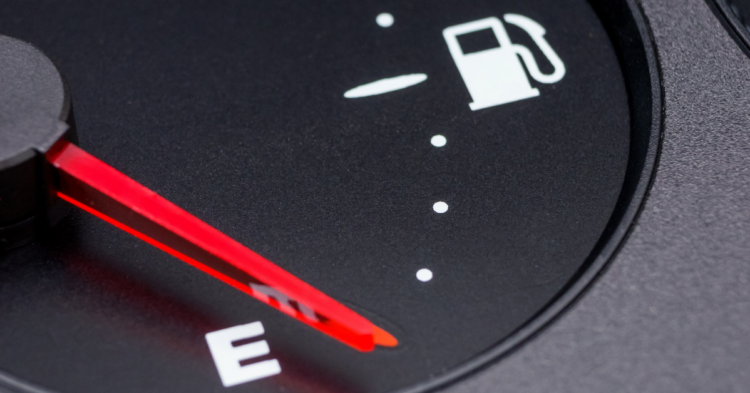Different people have different philosophies for what they do when the low fuel warning light comes on in their car.
While the light’s purpose is clear, the execution is lacking: how much fuel remains? How far can you drive? Fortunately, things have just become a lot clearer.
What do you do when that light turns on?

Some see it as par for the course, some see it as a catastrophe waiting to happen, and some see it as a challenge. Personally, I get freaked out. I never know whether I can drive for another mile, or another 50.
There’s a ton of variability.
It makes sense that gas guzzlers burn through fuel faster while gas sippers will be more conservative. But as it turns out, there’s actually some logic to how these warning lights get configured.
You can always drive 25 more miles.

Thanks to data on how different auto manufacturers handle the warning light, we have some sense as to when they’ll turn on. The vehicle with the lowest miles remaining when the lights turn on is the Chevrolet Silverado, which can only handle 25 more miles before the tank runs dry.
Some cars keep going and going…

Smaller vehicles like the Nissan Altima, Chrysler 200 and Nissan Versa are capable of driving for another 69 (nice) to 114 miles when that low fuel warning light turns on.
What about my car?

Yes, this section is all about my personal car. Fortunately it’s a super common vehicle, so it may be of use to you, too. Honda Civics can drive anywhere from 59 to 80 more miles when the light comes on.
How is it calculated?
There doesn’t seem to be any real standards. Most manufacturers trigger the warning light when there’s only a certain amount of gas left in the tank — generally two to four litres.
Ford does things differently.

All Ford vehicles trigger the warning light not when a certain amount of gas is left, but when a certain percentage of the tank is empty. Everything from the Focus to the F-150 will trigger a warning light when 1/16th of the tank is full.
Some manufacturers’ criteria is unclear.

Some Chevy, Hyundai, and Kia vehicles don’t list their criteria for when the light triggers. Even though the triggering is unclear, we do have data on how much more mileage each vehicle will get.
Here’s the full chart.

Thanks to Your Mechanic , we have a fairly comprehensive list of the most common vehicles on North American roads. It’s clear that a lot of data crunching went into compiling this chart.
Knowledge is power.
You don’t ever want to cut things too close, but it’s super helpful to have a rough idea of how much mileage you have left when the light triggers. It’s a way to reduce anxiety.
Use it at your own risk.

Running out of fuel is the worst. You don’t want to hitch to the next gas station or get towed. So if your low fuel light comes on, it’s probably best to not tempt fate and just pull over at the next gas station.
Have you ever driven on empty?

Was it a stressful nightmare or a thrilling joyride? What’s your strategy for when that little yellow light comes on? Make sure to share your stories in the comments!
















































